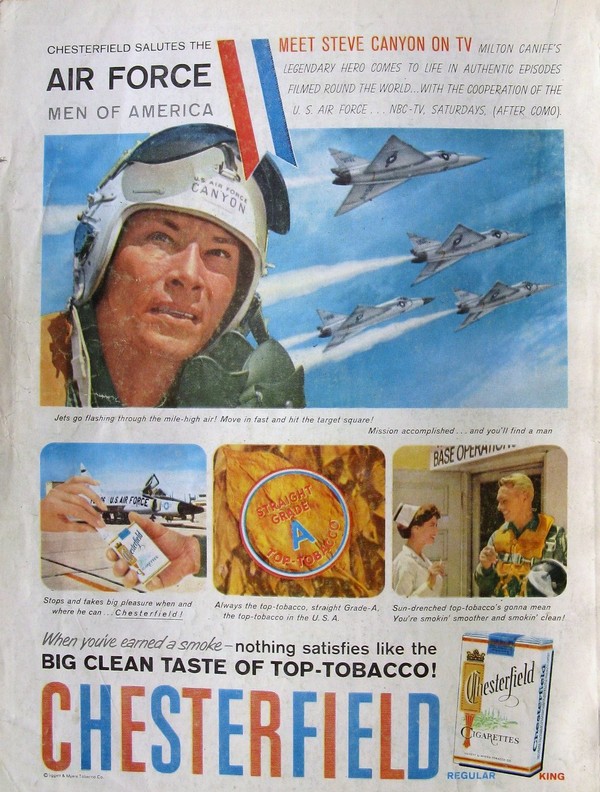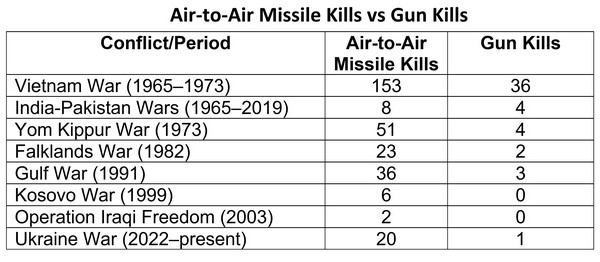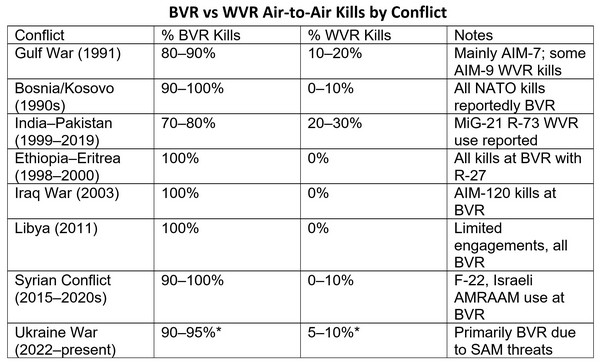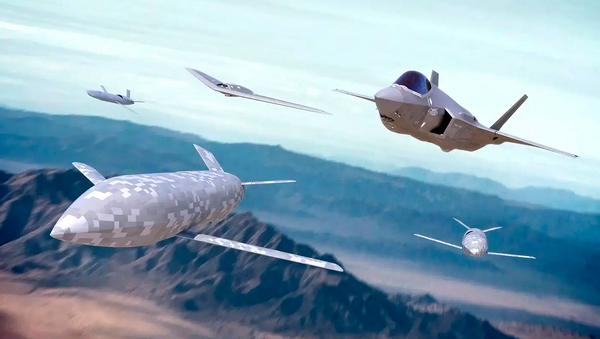The recent fighting between India and Pakistan has provided evidence of the diminishing role of the jet fighter pilot in modern warfare. A large air battle was fought between the two nations on May 6 and 7. India lost at least five jets, some of them advanced French Rafale fighters. Most of the losses were inflicted by BVR (Beyond Visual Range) air-to-air missiles. In the following video clip a Pakistani air force officer describes how their side of the battle was conducted.
🇵🇰Pakistan Air Force describes air battle with 🇮🇳Indian Air Force:
1️⃣ sizeable air packages
2️⃣ AEW, BMC3 critical for air situation pix
3️⃣ Civilian air traffic redirected from AO
4️⃣ No plan survives 1st contact
5️⃣ While truth is 1st casualty, ✅ proactive info push by PAF pic.twitter.com/l7p0nhd2TC— David Boey (@SenangDiri) May 11, 2025
Although this engagement was called a “dogfight” in some press reports, it was nothing of the kind. The missiles that downed the Indian fighter aircraft were launched from 20 to 100 miles away, with neither side crossing into the other’s airspace. No fancy maneuvering or daring aerobatics were needed. The role of the Pakistani pilots was reduced to following navigational directions and launching missiles against designated targets. The absence of successful ejections and recovery of downed pilots on the India side indicates that the targeted aircraft had insufficient warning, making evasive maneuvering impossible.
The Glory Days of Fighter Pilots
The star status of fighter pilots began in WWI, when flying skills and courage were the keys to victory in air-to-air combat. Manfred Von Richthofen, the “Red Baron,” had 80 confirmed kills to his credit. The vast scale of aerial combat in WWII resulted in over 5,000 pilots attaining ace status with more than five kills. A few German pilots achieved over 200 kills on the Eastern Front. The vast majority of these aircraft kills were achieved by rapid-firing guns with short ranges. Targeting depended on the eyesight and aiming dexterity of the pilots. Although popular culture depicts aerial battles as extended maneuvering contests, most kills in air combat after WWI resulted from surprise attacks, and the most successful pilots avoided dogfighting, preferring ambushes and first pass kills. Whatever the tactics, it was human eyes, brains, and muscles that resulted in the victories that made combat pilots heroes.
In the Korean War both sides used jet-powered fighters, and the mystique of the fighter pilot continued to grow. Steve Canyon, the comic book aviator created by Milton Caniff, became the symbol of a hero warrior piloting a high-tech jet in aerial combat. Aircraft guns still did the damage so all of the fighting was in visual range.

Enter the Missiles
During the Vietnam war, air-to-air missiles began to be used extensively in aerial combat. Missiles accounted for about two thirds of the kills made by U.S. fighter jets and about one quarter of the kills made by the North Vietnamese fighters. These early missiles had relatively short ranges and still required visual sighting of the target and maneuvering for a good firing position. After the Vietnam war, missiles became the dominant air combat weapon, with aircraft guns relegated to a secondary role.

As air-to-air missiles became more capable, with greater range and better guidance systems, the balance between WVR (within visual range) and BVR (beyond visual range) engagements also changed, and kills were increasingly achieved when the contending pilots were too far apart to see each other, rendering a maneuvering fight moot.

Returning to the latest fighting between India and Pakistan, the decisive actions were not taken by the fighter pilots. It was the radar operators of airborne surveillance aircraft and the commanders evaluating the tactical disposition of the planes on both sides who controlled the battle. The pilots were effectively just transporting the missiles and launching them under BMC3 direction (battle management, command, control, and communication) against targets too far away to see. This is not a heroic role, and theoretically it could be performed by unmanned aircraft.
Cultural Inertia
The history of warfare is marked by the persistence of ineffective practices. This has resulted in debacles such as suicidal infantry assaults in WWI, unprotected battleships sunk by aircraft in WWII, and the failure of U.S. forces against insurgents in Vietnam and Afghanistan. The meme of the combat pilot as a heroic champion is deeply entrenched in U.S. popular culture and in the ranks of the U.S. military. As a consequence, manned aviation remains a high priority in the U.S. defense establishment. Despite abundant indications of the impending dominance of drones and AI systems in future warfare, the U.S. continues to make massive commitments to manned fighters (F-35 and F-46) and bombers (B-2 and B-21).
Of particular concern is a proposal to develop drone combat aircraft intended to operate jointly with manned fighters. The U.S. Air Force has undertaken the Collaborative Combat Aircraft (CCA) program to build a fleet of drones that would operate in formations directed by manned aircraft. An obvious problem with this concept is the overloading of pilots who would have to manage multiple accompanying drones. The notion of AI drone “wingmen” aircraft waiting for instructions from a stressed and fallible human formation leader raises a serious feasibility question. One could argue that in many circumstances the instructions should be going from the AI drones to the human pilot. Fortunately, simulations can easily reveal shortcomings of the CCA concept. Unfortunately, the Pentagon and the defense contractors have a history of ignoring or distorting test results to favor continuation of flawed programs. The most likely outcome is that the CCA program will deliver too little, too late, and at enormous cost.

Collaborative combat aircraft concept depiction – What could be wrong with this picture?
Conclusion
The era of the heroic fighter pilot is coming to a close as technology relentlessly transforms the character of aerial warfare. Drone combat aircraft, unhindered by the biological limitations of human pilots, will eventually dominate the skies of armed conflicts. Cultural memes are difficult to erase, and entertainment media glorification of jet fighter pilots, like the Top Gun films (total gross: $1.86 billion) will help sustain political support for manned aircraft programs for many years. Military institutional inertia and perverse vendor incentives will continue working to keep human pilots in fighter planes. We can only hope that the costs will be limited to excessive Pentagon expenditures. The worst outcome could be a military disaster if we find that it is enemy combat drones that have the right stuff.






